#Michael Bader
Explore tagged Tumblr posts
Text

Open Access
Wenn man wissen möchte, wozu man heute Rechtswissenschaft studieren soll und warum man überhaupt juristisch arbeiten soll, wenn die Anwälte doch inzwischen durch eine Schwämme zu den Webern des 21. Jahrhunderts wurden und man mit einer Würstchen- und Pommesbude erstens mehr Geld verdienen und zweitens die Kunden schneller glücklich machen kann, dann empfiehlt sich unter anderem, eventuell ganz besonders, dieses Buch. The Wirbelwind Peer und der immer kräftige Fischer-Lescano haben mitgemacht, ist ja nicht alles so furchtbar, was sie tun. Unser Wintergast Palvasha Shabab hat in dem Buch mehrere Kapitel geschrieben.
2 notes
·
View notes
Text

My Lady Jane BTS
#jane grey#guildford dudley#king edward#fitz#archer#my lady jane#emily bader#edward bluemel#jordan peters#joe klocek#michael workeye#janeford#guildford x jane#jane x guildford
283 notes
·
View notes
Text
Batman: The Brave & the Bold premiered 16 years ago today on Cartoon Network!!!
So here’s my favorite song from the series!!!😁😍🤩
#Batman The Brave and the Bold#cartoonetwork#DC#dc comics#Batman#bruce wayne#matches malone#Bruce Wayne x reader#catwoman#selena kyle#black canary#Dinah Laurel Lance#huntress#Helena Bertinelli#Bob Kane#Bill Finger#James Tucker#Michael Jelenic#Andy Sturmer#Kristopher Carter#Diedrich Bader#Jeff Bennett#Corey Burton#John DiMaggio#Will Friedle#Tom Kenny#James Arnold Taylor#Michael McCuistion#Lolita Ritmanis#Sam Register
108 notes
·
View notes
Text

pic 7 has my heart on fire - Edward Bluemel
from Abbie Hern’s instagram
#MY HEART#I'M TOTALLY NOT CRYING OR ANYTHING#PLEASE BRING THEM BACK#my lady jane cast#my lady jane#save my lady jane#abbie hern#emily bader#michael workeye#jordan peters#edward bluemel#edward bluemel instagram#abbie hern instagram#bess tudor#jane grey#archer#edward tudor#guildford dudley#posting in the palace#pic 7 has my heart on fire#that comment made 🥺🥺🥺
57 notes
·
View notes
Text

Jane's a stronger woman than me because if he looked at me like that i would've folded like a camping chair
72 notes
·
View notes
Text
youtube
My Lady Jane Trailer
In history, Lady Jane Grey was a Tudor noblewoman who was beheaded in 1553 after being Queen of England for nine whole days. My Lady Jane is a reimagining of history in which Lady Jane saves herself from a beheading.
Inspired by Cynthia Hand's novel, My Lady Jane stars Emily Bader (Jane Grey), Edward Bluemel (Guildford Dudley), Jordan Peters (King Edward), Dominic Cooper (Lord Seymour), Anna Chancellor (Lady Francis Grey), Rob Brydon (Lord Dudley), Jim Broadbent (Duke of Leicester), Henry Ashton (Stan Dudley), Isabella Brownson and Robyn Betteridge (Jane's sisters), Kate O'Flynn (Princess Mary), Abbie Hern (Princess Bess), Máiréad Tyers, Joe Klocek, and Michael Workeye. Gemma Burgess serves as creator, co-showrunner, and an executive producer. Meredith Glynn serves as co-showrunner and an executive producer.
My Lady Jane hits Prime Video on June 27, 2024.
#my lady jane#lady jane grey#cynthia hand#emily bader#edward bluemel#jordan peters#dominic cooper#anna chancellor#rob brydon#jim broadbent#henry ashton#isabella brownson#robyn betteridge#kate o'flynn#abbie hern#mairead tyers#joe klocek#michael workeye#gemma burgess#meredith glynn#prime video#TGCLiz#Youtube
13 notes
·
View notes
Text

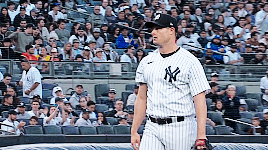

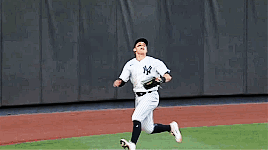

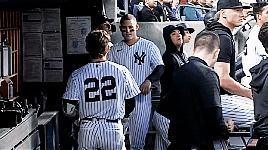
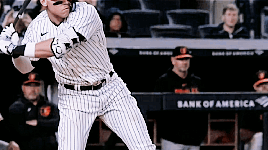
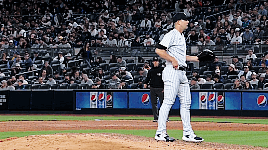


“A dramatic 6-5 win over the Orioles, and the rookie gets it done in the bottom of the tenth!” — favorite games
#new york yankees#gerrit cole#harrison bader#aaron judge#anthony volpe#anthony rizzo#gleyber torres#michael king#favorite games#baseballedit#*#trying something new idk if i like it but i went to this game it was SO fun
53 notes
·
View notes
Link
Tags: Angst, Angst and Feels, Misunderstandings, Forbidden, Soulmates, Falling In Love
#my lady jane#archer#jane grey#lady jane grey#jane x archer#my lady jane archer#emily bader#michael workeye#amazon prime#amazon prime video#soulmates#love#angst#forbidden
4 notes
·
View notes
Photo

mikelohan: Our ever-growing clique is strong ❤️
9 notes
·
View notes
Photo
-watched 4/27/2024- 3 [1/2] stars- on Roku channel (free)
84% Rotten Tomatoes
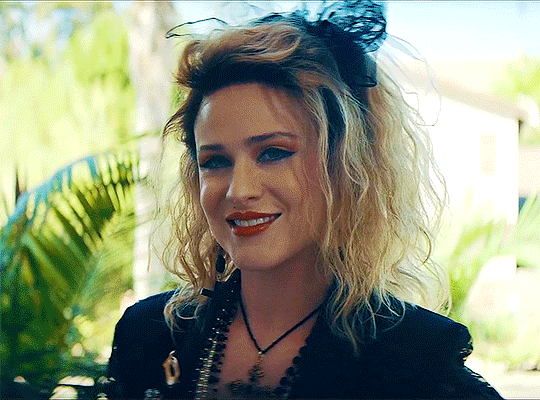
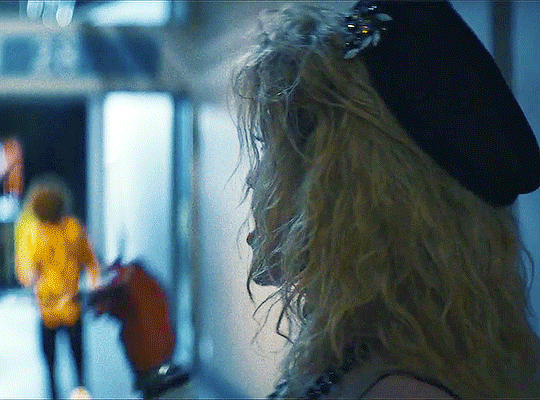
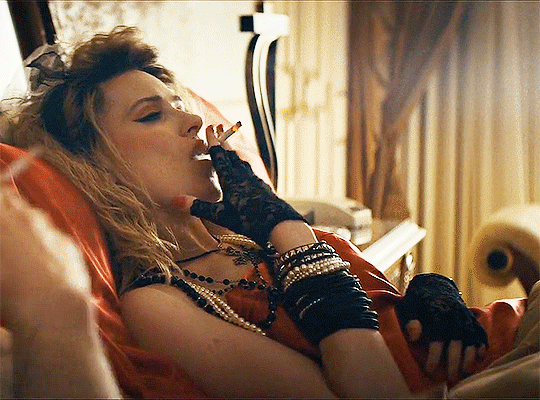



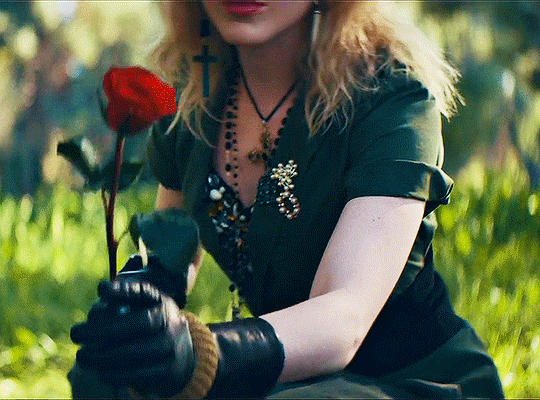
EVAN RACHEL WOOD AS MADONNA IN WEIRD: THE AL YANKOVIC STORY (2022)
#evan rachel wood#Weird: The Al Yankovic Story#(2022)#film#my have seen list#eric appel#comedy/musical#weird al yankovic#daniel radcliffe#spencer treat clark#julianne nicholson#lin manuel miranda#rainn wilson#arturo castro#thomas lennon#diedrich bader#jack black#will forte#toby huss#emo philips#quinta brunson#david dastmalchian#seth green#patton oswalt#josh groban#conan o'brien#michael mckean#andrew astor#dot-marie jones#julie chang
891 notes
·
View notes
Text


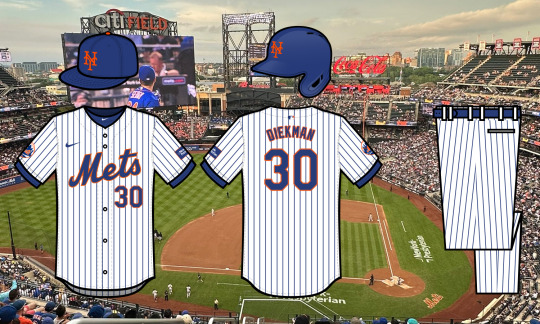
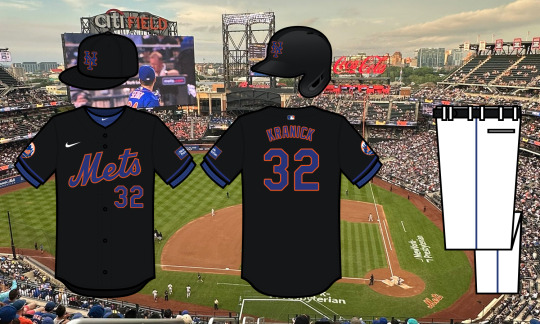






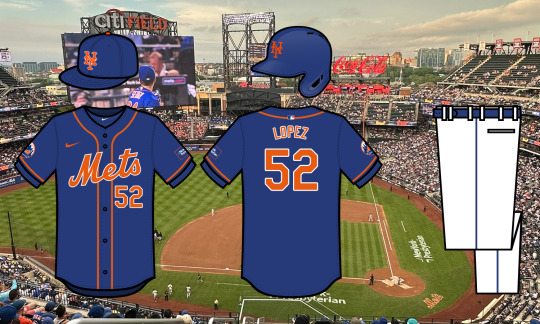
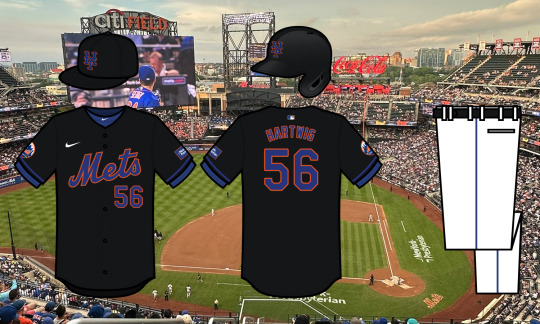
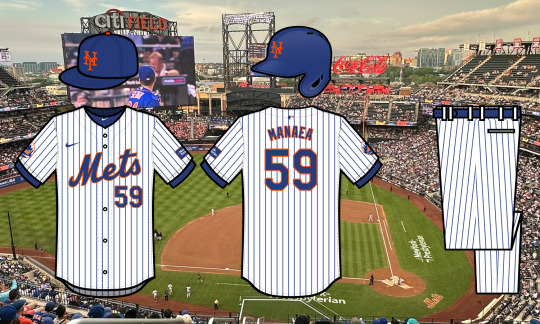

Joey Wendle takes 13. Last worn by Luis Guillorme in 2023.
Tyrone Taylor takes 15. Last worn by Danny Mendick in 2023.
Jake Diekman takes 30. Last worn by Rafael Ortega in 2023.
Max Kranick takes 32. Last worn by Daniel Vogelbach in 2023.
Adrian Houser takes 35. Last worn by Justin Verlander in 2023.
Luis Severino takes 40. Last worn by Drew Smith, who switches from 40 to 33. Last worn by Trevor Gott in 2023,
Harrison Bader takes 44. Last worn by T.J. McFarland in 2023.
Yohan Ramírez takes 46. Last worn by John Curtiss in 2023.
Michael Tonkin takes 51. Last worn by Paul Sewald in 2020.
Jorge López takes 52. Last worn by Brad Hand in 2021.
Grant Hartwig switches from 93 to 56. Last worn by Tyler Pill in 2017.
Sean Manaea takes 59. Last worn by Carlos Carrasco in 2023.
Zack Short takes 74. Last worn by Chris Mazza in 2019.
#New York Mets#joey wendle#tyrone taylor#jake diekman#max kranick#adrian houser#luis severino#drew smith#harrison bader#yohan ramirez#michael tonkin#jorge lopez#grant hartwig#sean manaea#zack short
1 note
·
View note
Text

Edward and Emily…or as Michael calls them EDMILY
#jane grey#guildford dudley#my lady jane#emily bader#edward bluemel#janeford#michael workeye#guildford x jane#jane x guildford
70 notes
·
View notes
Text
A Haunting in Venice (2023) Review
Post World War II in Venice, Italy a now retired Poirot reluctantly attends a seance he had been quite happy in exile and living alone. When a murder occurs he must revert back to being the famed detective once more. ⭐️⭐️⭐️⭐️ Continue reading Untitled

View On WordPress
#2023#A Haunting in Venice#Agatha Christie#Amir El-Masry#Based on a Novel#Camille Cottin#Crime#Drama#Dylan Corbett-Bader#Emma Laird#Fernando Piloni#Horror#Jamie Dornan#Jude Hill#Kelly Reilly#Kenneth Branagh#Michael Green#Michelle Yeoh#Review#Riccardo Scamarcio#Tina Fey
1 note
·
View note
Text

Edmily from Michael Workéyè's instagram
#I love this so much#edward's legs draped over emily's lap#thank you michael for sharing this gem#edmily#gonna use this from now on haha#edward bluemel#emily bader#my lady jane#my lady jane cast#my lady jane behind the scenes#michael workeye instagram#my lady jane favorite#edmily favorite#save my lady jane
49 notes
·
View notes
Text
Mr. Greg & Cass McCombs: The Kids Are Alright
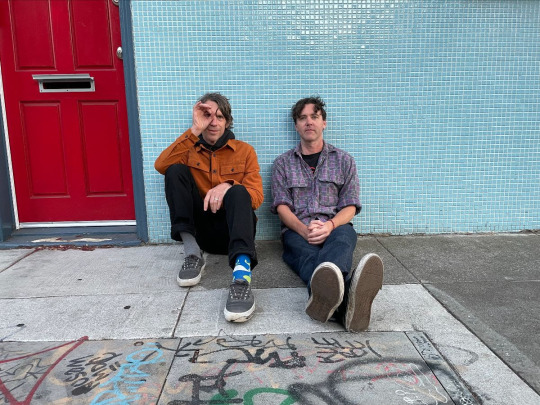
Photo by Sarah Trott
BY JORDAN MAINZER
The first albums that Greg Gardner made, cassettes and CDs with friends when he was a child, had a pretty small audience: his mom. Decades later, Gardner's prediction for the size of the audience for his first album made in a professional recording studio? "A few moms." He's joking, but even with the name recognition of his main collaborator--none other than Bay Area psychedelic folk luminary Cass McCombs--the intended audience for this album is not your usual indie rock or folk crowd. Gardner's a preschool teacher in San Francisco, McCombs his lifelong friend, and the two have come together to put to music Gardner's already penned children's tunes. Mr. Greg & Cass McCombs - Sing and Play New Folk Songs for Children is out now on none other than Smithsonian Folkways, a full circle moment for Gardner, and a fitting home for these tunes that are simple but infinitely wonderful.
Gardner and McCombs grew up hanging out and making music together, influenced by Bob Dylan and Dylan's heroes, Folkways recording artists like Woody Guthrie and Elizabeth Cotten. Gardner's applied his love of music to his career, not only introducing his students to these same artists but writing songs for his students about what they're studying at the time, from the life of Harvey Milk to the human body and the animal life cycle. And in the past, Gardner ran Secret Seven Records, releasing music from other Folkways artists like Michael Hurley. Simply put, Smithsonian Folkways is Gardner's favorite label, which he told me without pause during our phone conversation earlier this month. When the opportunity came, through some mutual connections (including McCombs' former manager Kirby Lee) to apply for a grant from the label to record his children's songs, Gardner didn't pass it up. He was in the middle of recording some other songs for fun with McCombs and casually asked whether McCombs would want to put to tape the likes of "Little Wilma Wiggly Worm" and "Things that Go in the Recycling Bin", too. McCombs obliged, and the rest is, now, quite literally, folk history.
The songs on Mr. Greg & Cass McCombs were written for children but exist in multiple realms. McCombs has stated that he doesn't see much of a difference between the direct simplicity of folk music and children's music, and during our conversation, Gardner cited how much certain folk classics, written in totally different contexts, have been sung by and for children, both his students and throughout history. You can hear the flipside in their record: how songs written for children are ultimately universal. "Requiem for Ruth Bader Ginsburg" and "Wave a Flag for Harvey Milk" offer biographies of fierce activists of their time. "Each One of Us" revolves around the ideal that "each one of us is different but we're friends just the same," a song that rejects the feigning of similarity that well-meaning but misguided (and often white liberal) educators practice, the antidote to "I don't see color." And "Friends from All Around the World", with a "Hello Version" and "Goodbye Version", consists of people giving salutations in their respective languages, guests including everyone from Hurley and Peggy Seeger to Gardner's own former coworkers and grandmother and grandfather. Full circle, indeed.
Not to mention, the instrumentation on Mr. Greg & Cass McCombs is not of the grating, maximalist type of usual music marketed towards children that parents are used to. For one, a lot of the songs sound like they could be on a McCombs record, as he rips a guitar solo during "Little Wilma Wiggly Worm" and playfully harmonizes with the vocals on "What's Your Favorite Kind?" "My Skull Is Made Out of Bone" is a gorgeous and wistful concoction of guitar, cello, and keyboards. Hand percussion and claps pervade "J-O-B" and "A Builder's Got a Hammer and Nails", a drum machine the blues stomp of "Roll Around Downtown" that, no matter your religious affiliation, delightfully invites you "to the church of 8 wheels." And when I first listened to the scratchy cello, echoing percussion, and light singing of "The Sounds that the Letters Make", I had to make sure I hadn't accidentally triggered the music I was using to prepare for my recent Arthur Russell review.
Mr. Greg & Cass McCombs is also, in the grand tradition of Folkways, instructional, not just in lyrics. The LP got the full treatment. "Something that I love about Folkways is the packaging and the aesthetic of their old records, how they're really thick carboard with the pasted over sleeves and minimalist artwork that's striking and clean and beautiful looking," Gardner said. "All the records come with booklets and liner notes and photographs...This record is issued like an old Folkways record, with the paste-on cover and booklet with liner notes and suggested activities that go with each song. The LP version is meant to be colored in by kids if they're so inclined." Best, in tribute to a Cotten record Gardner and McCombs loved as kids, Folkways was able to release a few copies on yellow vinyl. The record, like the best folk music, is now a living, timeless document, one that can be enjoyed by all, regardless of age.
Below, read my conversation with Gardner, edited for length and clarity. We talk about his experience in the studio, the politics of children's music, and approaching difficult subjects with kids.

Since I Left You: How did you decide to do this project with Cass?
Greg Gardner: Since we were teenagers, we've made music together. I'm not really a musician, but I like to write songs and sing. I would go to my friends and say, "What about this?" and they'd make it sound better. I've been making strange and silly songs with Cass that weren't meant for the general public. We made a lot of cassettes in our youth. Since I became a teacher, I've been writing songs to amuse myself while I take the BART train to and from work, and also with the hopes the kids would appreciate them as well. The songs are always about stuff the kids have been talking about in class or studying. "Little Wilma Wiggly Worm" is about a worm we found in our classroom garden, and all the kids were so excited about holding this worm, and we all named it together. I wrote the song about it, and it became a way to connect and create community over a fun shared experience. I usually create some visuals that go with the song. I made a book of Wilma Wiggly Worm, and Cameron Burr animated that book into a music video.
So I had been writing songs for many years, and Cass and I recorded some non-kids songs, not for the public, just for fun, and I asked him, "Would you like to record some kids songs with me?" He said, "Yeah!" I had demos of most of them--some of them a capella, some demos with instruments. For the record, we used some of those demos, the skeletons of them, and added instruments and backing stuff. A lot of those songs were rerecorded specifically for the record. There are a lot more that didn't go on. We may have put too many on this record, too, but there they are.
SILY: I was fascinated by Cass saying, "A lot of what’s called children's music is just folk music...I don't see a big difference between children's music and adult music." What's the history of your relationship with traditional or contemporary folk music?
GG: Around when I was a teenager, hanging out with Cass and other friends, we'd listen to Bob Dylan, and then into the people that influenced Bob Dylan, blues artists like Jesse Fuller and Lead Belly, or Woody Guthrie. Cass then introduced me to Elizabeth Cotten, who is on Folkways. Her records were not intended for children, but the songs are definitely beloved by children and adults alike. "Freight Train" and "Shake Sugaree", on which her granddaughter sings. Those are so beautiful. And there are so many folk songs about animals that, even if not written for children, sure work for the child and the adult. Children go through the same gamut of emotions that adults do, so folk music is for all. While these songs were intended for the 3-5-year-old children in my class, I enjoy singing them and hope people older than 5 enjoy singing them as well.
SILY: You sing about "kids' stuff," but "Requiem for Ruth Bader Ginsburg" and "Wave a Flag for Harvey Milk" are relevant to everybody, and sadly so, considering the climate. Do you view any of these songs as political in the same way folk music might be?
GG: My intention wasn't to be political when I made them, but to hold up people that were brave and good role models for the students in my class and school. I'm lucky to work at a school that has similar values to my own. My preschool class has led the Harvey Milk assembly we have every year on his birthday week. At the time I wrote ["Wave a Flag for Harvey Milk"], there wasn't an age appropriate book about Harvey Milk--now there is--but at the time, I thought it would be an easy way to introduce 3-5-year-old kids to what Harvey Milk did for the local community and community beyond. I ended up turning it into a singalong coloring book, so the kids could see images of Harvey and what he had done and so the kids could break down the song verse by verse or line by line. After a while, the kids got into the melody and learned the words themselves, and they became interested in the song. It's kind of a political thing, but more so about holding up the voices of people that are advocates for others. That's what we try to instill in the preschool classroom anyway: Be kind to one another, accept one another, advocate for one another, and be brave. Harvey Milk and Ruth Bader Ginsburg are really great examples of that.
Of course, Folkways has so many protest and topical songs in their catalog. Whenever I make a song, I have all of those songs mushed into my brain, and I'm making up songs that are unintentional rip-offs of what I've heard.
SILY: I was thinking about "If I Had A Hammer" when I heard "A Builder's Got a Hammer and Nails". The former was sung at Communist rallies, which isn't exactly the case with your song, but it still speaks to the connection between seemingly divergent genres of music that are one and the same. In this day and age, the school is such a contentious place in many parts of the country, whether that's school board curriculum fights or repressive laws. It almost does seem like a similar fight, children's music and folk music, a la "This machine kills fascists."
GG: It's true. I live in a little bubble at my school. I don't know if I'm lucky because of that, but the kinds of things we're talking about in songs and that the other teachers at my school believe, are what I believe and I think Cass believes. I know if you walk outside the bubble of San Francisco, it's different. I'm glad that these songs [exist], and that there are other groups of people writing songs and books and having rallies and marches that are in line.
SILY: Had you listened to a lot of other music made for children before writing these songs?
GG: Not really. Mostly just older music, and a lot of that was on Folkways. Not when I was a kid. I remember listening to Woody Guthrie songs and learning "This Land Is Your Land". Maybe "Riding In My Car" when I was a young kid. As a teacher and as a parent, I've collected the old Folkways records and have a collection in the classroom that we often play. It's become the oral landscape of the classroom. As far as contemporary kids music, I don't really know it. I'm sure there would be a lot that I like. I do know that Elizabeth Mitchell has some beautiful records out. I only know a little bit of Raffi, but every time I hear him, I think, "That guy's good."
When we were getting ready to release this record, Folkways asked whether Cass and I could make a playlist of Folkways songs from their back catalog that they could put online and that I could write about. I said, "How about we choose the songs, but instead of me reviewing them, the kids in my class can say some words about them?" A lot of the songs I chose were ones we already listened to in class. Whatever the kids would say would be more interesting than what I would say, and they have a lot more non-sequiturs that are more fun to read. The kids reviewed all the songs and ended up re-drawing classic Folkways album covers, so we took pictures of that, too. That's how we bring other children's music into the classroom. We learn about Elizabeth Cotten and Woody Guthrie and Ella Jenkins, who is one of our very favorites.
SILY: The record has recordings of your students throughout the years. How far back are some of those?
GG: The majority are not very far back. All of the students on there are from the first COVID year. I recorded those in the classroom on my phone, and we snuck them into the record when in the studio later. I would have used kids from previous years on the record and had so many recordings of them singing, but you have to get the rights from all the parents, which was too hard, so I figured I'd just find all the parents from one year.
SILY: A song like "Each One Of Us" is consistent with the spirit of many songs on the album in that it's essentially about diversity and equality. When I grew up, equality was taught very blindly, in an, "I don't see color" type of way. The idea behind this song is more, "Everyone is different, which we should embrace." Can you talk about that idea as it pertains to writing songs?
GG: I think that was one of the first songs I wrote for the class. At the beginning of the year, with preschoolers, we learn about the classroom and each other. We invite families into the classroom to share things they like to do, holidays they celebrate, food they enjoy. That song was building off of that creation of a classroom community and learning that we have so many similarities but also a lot of differences that we can learn from. We become stronger and safer when we get to know each other better. That was a songbook as well. It had some illustrations that kids could color in, and they got to say, "I have brown eyes, too, just like my grandma," or, "I have two moms as well, and Chelsea, she has two dads, and Brian only has one mom and nobody else, and this person lives with their grandma, and I live in an apartment, too." They were able to make so many connections with the verses in the songs.
SILY: The song "I'm A Nocturnal Animal" is very funny, with rhyme schemes involving regurgitation and owl pellets, but it's also about the cycle of life and death. How do you approach a subject like that with young kids?
GG: Through books and songs, and they understand it themselves. When we're learning about Harvey Milk or Martin Luther King, Jr., there are always one or two kids who have already heard about them, and one of the first things they know is that they died or were killed. Death comes up a lot. Kids' grandparents pass away, or their animals pass away, so there's a lot of talk in the class. Some books are helpful to read with the students. It sounds kind of silly, but we do have puppets just like Mr. Rogers did. The puppets sometimes come out and talk about these things that are more difficult to talk about. We'll act out a scenario where the puppet has a pet that passed away recently and the other puppet will show compassion and ask them how they're feeling. The kids will watch it and talk about how they'd feel in such a situation, or talk about people in their lives who passed away, and open up an organic conversation that may not have happened if it was just me talking about the subject as an adult. When you introduce puppets or a song, there's some sort of layer that's removed, and the kids are sometimes more willing to be vulnerable in that kind of situation.
In our classroom, we also celebrate The Day of the Dead, let by another teacher whose family celebrates it, and that opens up a lot of discussions.
And a song like "Deciduous Tree" is about the seasonal cycle of a tree but also about butterflies and caterpillars. We talk about animal and human life cycles in the class, and there's inevitably death. We talk about it as a scientific thing.
SILY: It's unique to hear death in a song that's primarily meant for children.
GG: I've also noticed that when we're learning about these specific historical figures or discussing the death of an animal in the family, in the playground, I'll find a child lying down, and when I ask what's going on, they say, "I'm just playing dead." They work it into their pretend play, which helps them work through their feelings and emotions about subjects that are difficult. It's like a rehearsal for what could happen as an adult.
SILY: "My Skull Is Made Out of Bone" is a fascinating self-reflexive exercise. By the end of it, you're breaking the fourth wall, asking, "How did this song start? Well, it's because of my brain, which is protected by my skull, which is made out of bone." It's pretty layered!
GG: I like how it's a loop. It begins as it starts as it begins. The kids in my class will sing the last part, "My skull is made out of bone," and then start the song all over again. [laughs] We made that song because we were learning about the human body. The kids chose that study themselves.
SILY: Have you done live performances of these songs for parents?
GG: We do it for parents every year. We do the Harvey Milk song for assembly. My school goes up to 8th grade, so there are a lot of people in the assemblies, and a different group leads them each Friday. We usually have another assembly where we sing about something we've been learning about. This year, I made up a song about rocket ships, because the kids were learning about space and built mini rocket ships out of cardboard. We learned about the planets and talked about what we would do if we were visiting each planet and what we would find. Other times, throughout the year, we invite the parents in to come hear their kids sing. We had one performance outside of school, at an opening for the children's magazine Illustoria. We performed "My Skull Is Made Out of Bone".
I don't really like performing myself. It's the scariest thing for me. But I love singing the songs with the kids in the classroom every day.
SILY: Do you think Cass will work any of these songs into his setlists?
GG: [laughs] Probably not, though he told me he's done "Wave a Flag for Harvey Milk" before with Phil Lesh at Lesh's [now closed] restaurant Terrapin Crossroads. They did it during Pride Week. I wish I was there. Maybe he'll work something in. It's kind of its own separate thing.
I was also a little bit afraid that his fans would see this record and say, "Oh no, a kid's record, it doesn't sound like Cass's music."
SILY: It kind of does though! You can immediately tell it's him, and he has the perfect voice for these songs. It's gentle and expressive at the same time.
GG: He does have a very gentle voice.
SILY: And a lot of the instrumentation on here has that same folk background, a little rougher around the edges in terms of arrangements, especially with the strings and percussion.
GG: I like that we were able to put some strange things in there, some discordant sounds. I like that we got to play actual tools on "Hammer and Nails". Folkways has the tradition of releasing sound effects records, like Sounds of the Junk Yard. At the end of "Hammer and Nails", you hear these smashing sounds. There was construction going on upstairs, so initially, we had to keep stopping our recording, but we decided to just record them banging away and use that in the song.
SILY: There are sound effects at the end of "What's Your Favorite Kind?" and "Paper Airplane" too.
GG: I got to do a "whoop" with some tool I found in the classroom. I went in to look for woodworking tools but found the slide whistle. And "What's Your Favorite Kind?" has Tommy [McMahon], who I've been friends with since I was 10, playing Moog on there. He made it sound like a 1970s Sesame Street song, which is what I'd been hoping for. He goes by Controller 7.
SILY: How did you find the overall process of making the album? Are you planning on recording more songs?
GG: I think we'd like to do more. I'm going to keep making them myself. Cass said he'd be interested. He lives in New York now.
This was my first time going to a real studio, though it was during COVID, so a lot of it was piecemeal, where I'd have some demo stuff, and we wanted guests on there but couldn't get them into the studio, so we did a lot of cutting and pasting. It was cool how it all came together in the end. It would be fun to go in there now and lay it all down in a more live way. That's also hard to do with kids. I'm glad I got to use the voices of the kids in my class on this record. They're the biggest part of these songs. They're why they exist.
youtube
#interviews#mr. greg & cass mccombs#smithsonian folkways#michael hurley#illustoria#Mr. Greg & Cass McCombs - Sing and Play New Folk Songs for Children#greg gardner#smithsonian folkways recordings#mr. greg#cass mccombs#bob dylan#elizabeth cotten#harvey milk#secret seven records#kirby lee#ruth bader ginsburg#peggy seeger#cameron burr#jesse fuller#lead belly#woody guthrie#elizabeth mitchell#raffi#arthur russell#ella jenkins#martin luther king jr.#mr. rogers#phil lesh#terrapin crossroads#sounds of the junk yard
1 note
·
View note
Text
in honor of that anon who said jews have done nothing for the world, here’s a non exhaustive list of things we’ve done for the world:
arts, fashion, and lifestyle:
jeans - levi strauss
modern bras - ida rosenthal
sewing machines - isaac merritt singer
modern film industry - carl laemmle (universal pictures), adolph zukor (paramount pictures), william fox (fox film forporation), louis b. mayer (mgm - metro-goldwyn-mayer), harry, sam, albert, and jack warners (warner bros.), steven spielberg, mel brooks, marx brothers
operetta - jacques offenbach
comic books - stan lee
graphic novels - will eisner
teddy bears - morris and rose michtom
influential musicians - irving berlin, stephen sondheim, benny goodman, george gershwin, paul simon, itzhak perlman, leonard bernstein, bob dylan, leonard cohen
artists - mark rothko
actors - elizabeth taylor, jerry lewis, barbara streisand
comedians - lenny bruce, joan rivers, jerry seinfeld
authors - judy blume, tony kushner, allen ginsberg, walter mosley
culture:
esperanto - ludwik lazar zamenhof
feminism - betty friedan, gloria steinem, ruth bader ginsberg
queer and trans rights - larry kramer, harvey milk, leslie feinberg, abby stein, kate bornstein, frank kameny, judith butler
international women's day - clara zetkin
principles of journalizm, statue of liberty, and pulitzer prize - joseph pulitzer
"the new colossus" - emma lazarus
universal declaration of human rights - rene samuel cassin
holocaust remembrance and human rights activism - elie wiesel
workers rights - louis brandeis, rose schneiderman
public health care, women's rights, and children's rights - lillian wald
racial equity - rabbi abraham joshua heschel, julius rosenwald, andrew goodman, michael schwerner
political theory - hannah arendt
disability rights - judith heumann
black lives matter slogan and movement - alicia garza
#metoo movement - jodi kantor
institute of sexology - magnus hirschfeld
technology:
word processing computers - evelyn berezin
facebook - mark zuckerberg
console video game system - ralph henry baer
cell phones - amos edward joel jr., martin cooper
3d - leonard lipton
telephone - philipp reis
fax machines - arthur korn
microphone - emile berliner
gramophone - emile berliner
television - boris rosing
barcodes - norman joseph woodland and bernard silver
secret communication system, which is the foundation of the technology used for wifi - hedy lamarr
three laws of robotics - isaac asimov
cybernetics - norbert wiener
helicopters - emile berliner
BASIC (programming language) - john george kemeny
google - sergey mikhaylovich brin and larry page
VCR - jerome lemelson
fax machine - jerome lemelson
telegraph - samuel finley breese morse
morse code - samuel finley breese morse
bulletproof glass - edouard benedictus
electric motor and electroplating - boris semyonovich jacobi
nuclear powered submarine - hyman george rickover
the internet - paul baran
icq instant messenger - arik vardi, yair goldfinger,, sefi vigiser, amnon amir
color photography - leopold godowsky and leopold mannes
world's first computer - herman goldstine
modern computer architecture - john von neumann
bittorrent - bram cohen
voip internet telephony - alon cohen
data archiving - phil katz, eugene roshal, abraham lempel, jacob ziv
nemeth code - abraham nemeth
holography - dennis gabor
laser - theodor maiman
instant photo sharing online - philippe kahn
first automobile - siegfried samuel marcus
electrical maglev road - boris petrovich weinberg
drip irrigation - simcha blass
ballpoint pen and automatic gearbox - laszlo biro
photo booth - anatol marco josepho
medicine:
pacemakers and defibrillators - louise robinovitch
defibrillators - bernard lown
anti-plague and anti-cholera vaccines - vladimir aronovich khavkin
polio vaccine - jonas salk
test for diagnosis of syphilis - august paul von wasserman
test for typhoid fever - ferdinand widal
penicillin - ernst boris chain
pregnancy test - barnhard zondek
antiretroviral drug to treat aids and fight rejection in organ transplants - gertrude elion
discovery of hepatitis c virus - harvey alter
chemotherapy - paul ehrlich
discovery of prions - stanley prusiner
psychoanalysis - sigmund freud
rubber condoms - julius fromm
birth control pill - gregory goodwin pincus
asorbic acid (vitamin c) - tadeusz reichstein
blood groups and rh blood factor - karl landsteiner
acyclovir (treatment for infections caused by herpes virus) - gertrude elion
vitamins - caismir funk
technique for measuring blood insulin levils - rosalyn sussman yalow
antigen for hepatitus - baruch samuel blumberg
a bone fusion technique - gavriil abramovich ilizarov
homeopathy - christian friedrich samuel hahnemann
aspirin - arthur ernst eichengrun
science:
theory of relativity - albert einstein
theory of the electromagnetic field - james maxwell
quantum mechanics - max born, gustav ludwig hertz
quantum theory of gravity - matvei bronstein
microbiology - ferdinand julius cohn
neuropsychology - alexander romanovich luria
counters for x-rays and gamma rays - robert hofstadter
genetic engineering - paul berg
discovery of the antiproton - emilio gino segre
discovery of cosmic microwave background radiation - arno allan penzias
discovery of the accelerating expansion of the universe - adam riess and saul merlmutter
discovery that black hole formation is a robust prediction of the general theory of relativity - roger penrose
discovery of a supermassive compact object at the center of the milky way - andrea ghez
modern cosmology and the big bang theory - alexander alexandrovich friedmann
stainless steel - hans goldschmidt
gas powered vehicles
interferometer - albert abraham michelson
discovery of the source of energy production in stars - hans albrecht bethe
proved poincare conjecture - grigori yakovlevich perelman
biochemistry - otto fritz meyerhof
electron-positron collider - bruno touschek
3K notes
·
View notes